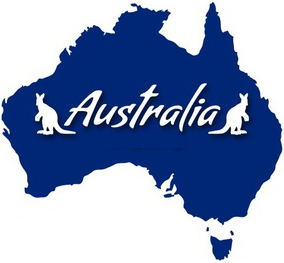How 5 leading brands are driving diversity & inclusion

In a world where digital disruption is affecting all industries, increasing innovation driven by diversity is a clear competitive advantage. Businesses are also coming to the realisation that having diverse employee perspectives, skills and experiences reduces business risk. This is in addition to near consensus from businesses that workforce diversity and inclusivity drive company performance.
When leaders exhibit various aspects of both inherent and acquired diversity, firms are 45 percent likelier to grow their market share and 70 percent likelier to capture a new market, according to comprehensive research in Harvard Business Review that was taken from 40 case studies, a representative survey of 1,800 professionals and numerous focus groups and interviews.
We are led then to a crucial series of questions:
- How do you gauge diversity, both inherent and acquired?
- What tools are giving visibility into workforce composition?
- How do you improve Talent Acquisition to ensure your workforce is diverse?
Here are what five top companies are doing to overcome these challenges and drive real, sustainable change.

Sodexo built a business case using people analytics to increase executive buy-in for their diversity initiatives.
They were able to show that among their own business units, units with more women in leadership performed better for key financial metrics as well as in non-financial categories—such as improving employee engagement.
Sodexo also relates senior leaders’ compensation to making progress towards D&I initiatives.

The heart of Dell’s diversity strategy uses recruiting CRM tactics to share personalised and segmented messaging around their employer brand and EVP.
In a recent article in Human Resources Director: New Zealand, Senior Vice President of Global Talent Acquisition Marie Moynihan shared, “Our focus is very much on targeting talent with messages of how [what they seek] can be achieved at Dell”.
In one campaign, Dell deployed recruitment marketing to create a pipeline for engineers of an underrepresented ethnicity. They built a custom landing page to communicate what diversity at Dell looks like and how and why Dell supports it as a company value.
The landing page included a registration form where people could join Dell’s Talent community, and the recruiting team promoted the page on social media with messages targeting the underrepresented demographic. People who joined the Talent community from the diversity landing page were linked to a specific talent pool in the CRM.
At zero cost, the campaign’s 24 posts to Twitter and Facebook over a two-month period spurred 112 engineers from that ethnicity to apply to Dell. Dell was able to measure the campaign’s ROI from within their CRM by leveraging its reporting capabilities, including a feature that tracks leads using customised links.

An Australian mining and petroleum multinational worked to align TA strategy with the broader HR and business strategy after their CEO announced a goal of gender balance by 2020.
This involved transforming the TA operations and strategy to enable highly sophisticated and proactive execution.
After investing in understanding the personas that they were targeting for specific job families at a very granular level, they combined sourcing strategy with recruitment marketing and a new and authentic EVP to successfully appeal to the demographic.

At L’Oréal USA, they launched several employee resource groups, or Think Tanks, to promote a more inclusive workplace for underrepresented groups, including certain ethnicities, LGBTQI and people with disabilities.
These groups have helped create marketing campaigns that speak to a more diverse audience.
They’ve also aided HR in identifying ways in which the company can better support all employees, including changes to healthcare coverage and disability benefits—two good reasons why L’Oréal USA calls them Think Tanks.

Using a centralised platform to manage all requisitions, a leading national bank in Europe is able to add a diversity and inclusion footnote to all of its job adverts with just one click.
The bank also worked to identify skills that they can teach to potential employees rather than recruit for as a way to go beyond traditional requirements and consider diverse candidate pools, including more internal candidates.
Their strategy leverages technology by using Talent pool analytics and automation to highlight whether a short list includes a diverse candidate pool.
They have been so successful that their goal is now to deliver a highly diverse short list every time, for every role, and to promote internal mobility, which has contributed significantly to employee engagement.
Automating administrative tasks has also enabled their TA team to focus on strategic tasks and partnering with the business. This saved time, cost and increased customer satisfaction.
Companies in the top quartile for gender and ethnic diversity are 21 to 33 percent more likely to outperform the national industry median.
Yet diversity and inclusion extend beyond ATSI or gender to include lived experiences such as background, geography and culture. All these variations help your company align with customers and improving any aspect of them requires HR technology that empowers you when it comes to diversity and inclusion goals.
A true partner for D&I will have deep industry experience, insights from previous deployments, dedication to customer success and an innovative customer community.
Cover image: Shutterstock
This article is contributed by Avature.
Related articles
Leave a Reply
Sign up to our newsletter
Get a weekly digest on the latest in Talent Acquisition.
Deliver this goodness to my inbox!


